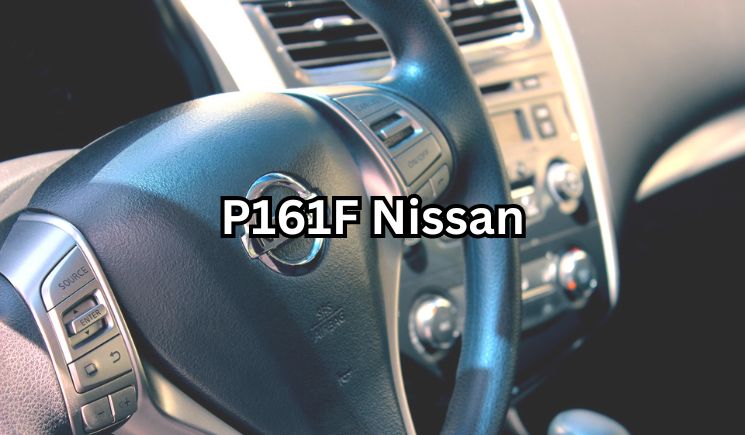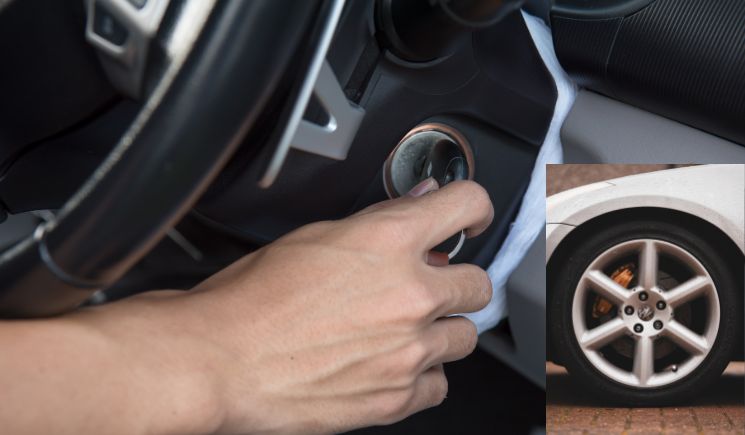P161F Nissan: A Comprehensive Guide of Decoding the Error Code

Automotive error codes can be a headache for vehicle owners and technicians alike, but understanding their meaning is crucial for proper diagnosis and repair.
Among the myriad of codes found in Nissan vehicles, the P161F stands out as a particularly perplexing one.
In this comprehensive guide, we’ll delve into the basics of the P161F error code, its potential causes, and the steps necessary to rectify the underlying issues.
Table of Contents
Potential Causes of the P161F Code
There are few concerning causes that can trigger the P161F error code in a Nissan vehicle.
Let’s explore them in detail:
Wiring Issues
- Damaged or corroded wiring harnesses
- Loose or disconnected wiring connectors
- Shorts or open circuits in the wiring
Control Module Malfunctions
- Faulty engine control module (ECM) or powertrain control module (PCM)
- Issues with other control modules in the vehicle’s network
Network Communication Problems
- Disruptions in the vehicle’s controller area network (CAN) bus
- Interference or electromagnetic compatibility (EMC) issues
Software Glitches
- Outdated or corrupted software in the ECM or PCM
- Software compatibility issues after module replacements
Diagnostic Procedures
When the P161F code is detected, you must follow a systematic approach to pinpoint the root cause.
Here are the typical diagnostic steps:
Visual Inspection
- Check for any easy-to-catch signs of damage to wiring harnesses or connectors
- Carefully inspect all accessible wiring harnesses by looking for chafing, cuts, pinched wires, or broken connectors
- Pay close attention to areas where harnesses may rub against other components or edges
- Check connectors for bent, broken, corroded or pushed-out pins
- Ensure that the connectors are fully seated and locked into place
- Inspect for signs of moisture or corrosion around the ECM or PCM
- Remove any covers and carefully examine the ECM/PCM for signs of water intrusion
- Look for green/white crusty deposits or discoloration around the components – that indicates any moisture presence
- Check for corrosion on ECM/PCM pins, connectors, or mounting areas
- Inspect foam seals or gaskets for deterioration that could allow moisture entry
Scan Tool Diagnosis
- Use an advanced scan tool to read and clear the error code
- Read and record all the trouble codes that are present, including all the pending codes
- Check for any additional codes that may provide clues to the underlying issue
- Cross-reference all codes to get a more complete diagnosis picture
- Pay attention to manufacturer-specific code definitions and circuit details
Wiring Tests
- Perform a resistance and a continuity tests on the relevant wiring harnesses
- Disconnect any suspected wiring harnesses and connectors
- Use a high-quality digital multimeter to test for shorts to ground, shorts to power, and open circuits
- Inspect for any wiring for damage that could cause high resistance readings
- Check for proper grounding and power supply to the control modules
- Use a multimeter to check for any grounds have low resistance to the battery terminal
- Confirm that the modules receives the correct voltage supply from vehicle power sources
Frequently Asked Questions About P161F Nissan
Q: Can I drive my Nissan vehicle with the P161F code?
A: While it is not usually ideal to drive with the P161F code, it is not recommended to continue driving for extended periods without addressing the issue. Prolonged driving with this code can potentially lead to further damage or complications. Where you might end up with costly repairs in the end.
Q: Is it expensive to repair the P161F code?
A: The cost of repairing the P161F code can vary depending on the specific cause. Wiring repairs or control module replacements can be relatively inexpensive, while more complex issues involving the CAN bus or software updates may be more costly.






